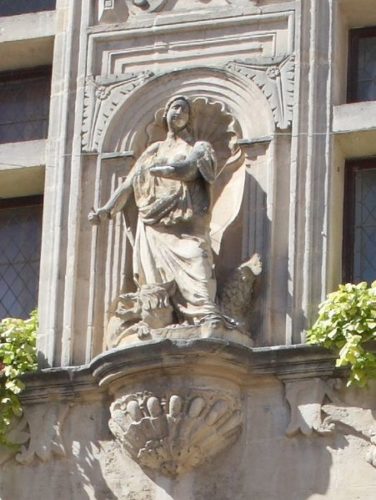Recently, I commented on how we don’t know what happened with Martha after Jesus came to visit. He’d gently reprimanded her, so we’re left with the conclusion “be a Mary rather than a Martha.” No bustling around. Take time to sit at Jesus’s feet. I never thought of her much beyond that. But with her recent feast day, I learned maybe it wouldn’t be so bad to be a “Martha.”
Firstly, this tale of the overbusy servant isn’t her only Biblical appearance. She reappears in the book of John after her brother, Lazarus, has died. In case you’re left with the assumption that Martha was all work and no pray, she makes an important declaration to Jesus—and this is before Jesus resurrects her dear brother.
“Yes, Lord; I believe that you are the Christ, the Son of God, he who is coming into the world.”
—John 11:27
But wait—there’s more!
In legends of post-Biblical life, Martha is a force to be reckoned with. Her most famously chronicled tale hails from the Golden Legend, a Medieval compilation of the lives of saints. The tales border on fantastical, and I won’t claim the validity of any of this, but it’s a pretty great story.
After Jesus’s death, Martha and her siblings are said to have been missionaries to France. But this was no peaceful land at that time. In the first century, France was tormented by Tarasque, a legendary dragon-like creature. No military might could defeat it. But Martha could do what no soldier could—she tamed it. In sprinkling holy water, reciting hymns and prayers, she was able to calm it and wrap it in her scarf. She lead the now-docile beast into the city, but the people were still afraid. When they attacked Tarasque, it showed no resistance and they ultimately killed it. Rather than mourn, Martha took this opportunity to evangelize the city and convert many in her wake.
Martha’s crypt can be found at St. Martha’s Collegiate Church in Tarascon, France, the town named after that very same legendary dragon.

Martha and Tarasque grace the facade of Tarascon’s Town Hall. (source)
Maybe, in the end, being a “Martha” isn’t so bad after all.
